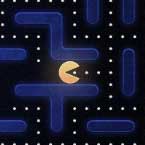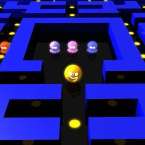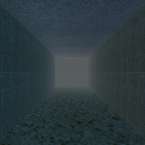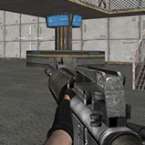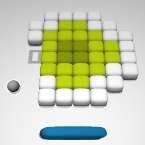Arcade Game Online
An arcade game is a coin-operated amusement machine, typically installed at public business centers such as restaurants, public establishments, and video arcades. Most arcade games are redemption games, trade (such as claw crane), video games, or pinball machine games.
History
Popular 'arcade games' originated as amusement park midway games, such as shooting galleries, ball toss games, and early coin-operated machines such as those that claimed fortunes or played machine music. The old midways of 1920s-era amusement parks (such as New York's Coney Island) provided the inspiration and atmosphere for later arcade games.
In the 1930s, early coin-operated pinball machines were manufactured. These early instruments differed from their later electronic descendants in that they were made of wood, did not have pistons or luminous dividend surfaces in the playing area, and used mechanical measures rather than electronically scoring readable figures. Most pinball machines produced from around 1977 began to use solid electronics for both handling and scoring.
In 1971, students at Stanford University started the Galaxy Game, a coin-operated version of the Space War game. This is the oldest known example of a coin-operated video game. Later that year, Nolan Bushnell produced the first large-scale computer space-like game for Nutting Associates.
In 1972, Atari was formed by Nolan Bushnell and Ted Dabney. Atari originally created the coin-operated video game industry with the Pong game; Pong is a popular electronic ping pong video game. Pong proved popular, but copycats didn't allow Atari to dominate the coin-operated video game market. In the late 1970s and early 1980s, small 'corner arcades' in malls, restaurants, grocery stores, bars, and cinema halls were dominated by video game arcades throughout the United States and other countries. Games such as Space Invaders (1978), Galaxian (1979), Pac-Man (1979), Battlezone (1980) and Donkey Kong (1981) became particularly popular.
During the late '70s and '80s, arcades were set up in traditional restaurants and bars, including chains such as Chuck E. Cheeses, Ground Round, Dave & Busters and Gatti's Pizza.
In the late 1980s, the arcade video game craze began to subside with the advancement of home video console technology. Capcom's Street Fighter II (1991), Midway Games' Mortal Combat (1992), SNK's Fatal Fury: King of Fighters (1992), Rare's Killer Instinct (1994) and SNK's The King of Fighters (1994–2005) The advent of two-player fighting games led to a resurgence of arcade video games.
Virtually all types of modern arcade games (except very traditional games such as the traditional Midway-type games at county fairs) have broadened the use of solid-state electronics and integrated circuits. In olden times coin-operated arcade video games typically used custom per-game hardware with multiple CPUs, highly specialized sound and graphics chips, and the latest display technology in computer graphics. Recent arcade game hardware is based on modified video game console hardware or higher-end PC components.
Arcade games often have far more immersive and realistic game controls, including specific environments or control accessories, than PCs or consoles. Force feedback control, dedicated lightgun, rear projection display, reproducer of an automobile or airplane cockpit, a fully enclosed dynamic cabinet with a motorcycle or horse-shaped controller or a very dedicated controller such as a dancing mat or fishing rod. These accessories typically differentiate modern arcade games from PC or console games, as they are usually too heavy and expensive to be used on home PCs and consoles.
The levels in arcade games are often very short and the controls are quite simple and intuitive while the difficulty level increases rapidly. This is due to the arcade environment, where the player only plays the game as long as his avatar is alive in the game (or until his token runs out).
Console or PC games can also be referred to as 'arcade games' if they also have these features or are direct ports of arcade titles. Many independent developers are offering games in the arcade style, designed specifically for use on the Internet. These games are usually designed with Flash/Java/HTML/Javascript and run directly on the web-browser.
Keywords:
Arcade Games, Classic Games, Old Game





